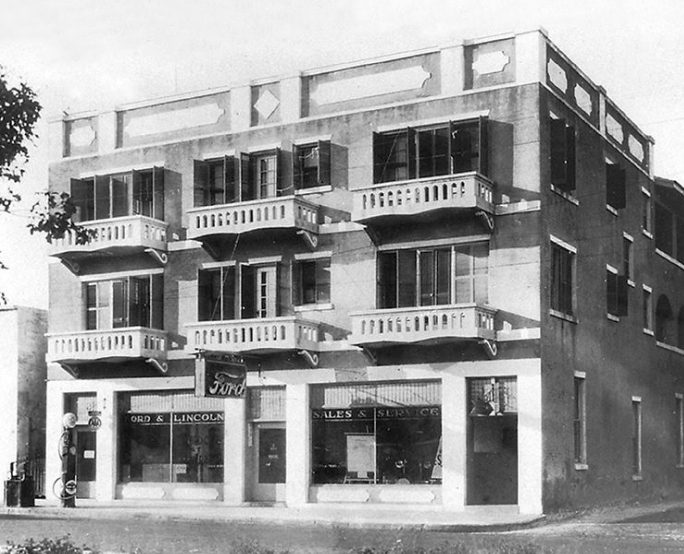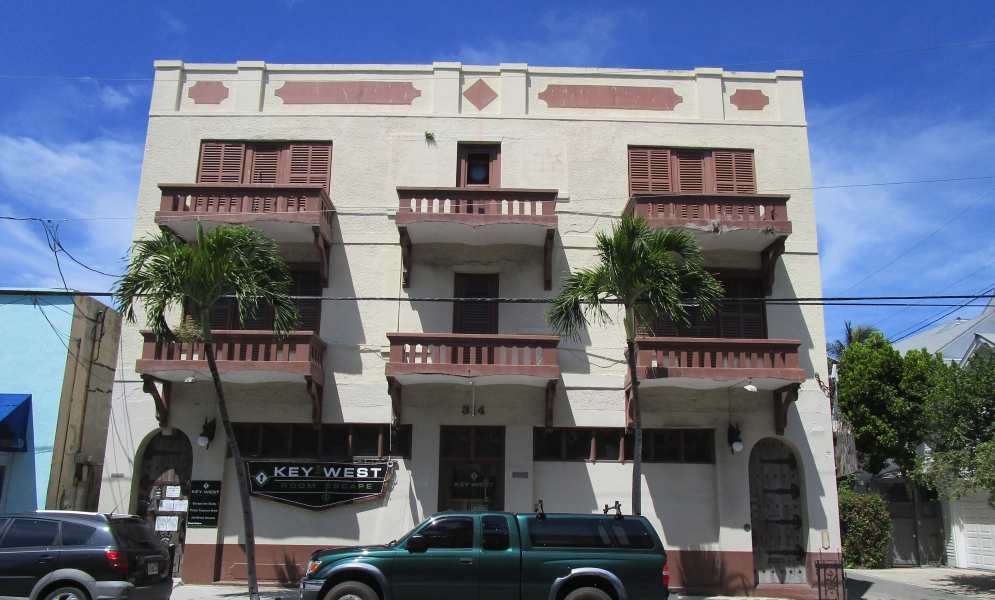"I got it! Another clue!" Sharon called out.
We were literally locked in a room inside a building where Ernest Hemingway had really once lived and written: the former Trevor Morris Building, on Simonton Street, in Key West. We were exploring every inch of our new environment—searching for keys and clues, fiddling with this and that, trying to solve puzzles and decode cryptograms—while the red numbers of a digital clock on the wall silently and relentlessly ticked backwards toward zero, as we looked for ways to open a series of locks that would lead to our freedom.

John, who was working a padlock on the opposite side of a partition, called back: “What does it say?”
Sixty minutes was all we were given to find and rescue the missing last page of A Farewell to Arms and to then escape this Hemingway-themed Escape Room before time ran out. It was a task that was supposed to be taken on by a group. Instead, it was just the two of us; and despite our initial misgivings, we became wrapped up in the moment and were truly enjoying ourselves.
Ernest and Pauline Hemingway's first glimpse of Key West happened at about 10 miles offshore, when the seven-story tall Key West Colonial Hotel came into view. It was April 2, 1928, and the couple had just arrived back in the States, having sailed from Marseilles to Havana, due to Ernest being slightly homesick and a five-months pregnant Pauline wanting to give birth to the couple's first child (Patrick) in the United States.
But Ernest had no intention of setting foot back in Oak Park, Illinois, where he had grown up; instead opting to make landfall at the farthest away place on American soil possible. He’d never been to Key West or any of the 120-mile-long chain of Keys. Because his friend John Dos Passos had spent time in the Keys, it’s possible that Hemingway might have expected to find himself in some sort of dreamlike paradise.1 What he saw though, upon departing from the ship, was not exactly impressive or dreamy. Ernest saw a flat, dilapidated seaport lacking character, made further ugly by the cloud of gray smoke billowing up from a recently installed garbage dump inside the equally dilapidated remains of Fort Zachary Taylor.
Reading the freshly decrypted sentence, Sharon said: “The second number in the combination is….”
Pauline, for her part, absolutely hated Key West. She viewed the place as a run-down backwater that was too hot and too humid (even for someone who came from Arkansas) and decided she’d rather have her child born anywhere but there. What had been initially planned as a six-week visit for the Hemingways was quickly turning into a desire by both to escape as quickly as possible.
“Ten minutes left!” John called out, looking up at the clock. Many clues had been uncovered, but we still hadn’t found the final page of A Farewell to Arms. We began to wonder if we would make it out in time.
The building in which we found ourselves racing around, trying to match up found keys and combinations to a myriad of locks, represents a turning point in Hemingway’s life—both personal and professional—that might never have happened if he had not come to live in this space. And although we were trying to escape, what was it that had led to Hemingway and Pauline not escaping, themselves, from Key West—a place both had assumed, when they arrived that hot April, would prove only a temporary haunt?
To be continued . . .

Notes
1 In James McLendon’s Papa: Hemingway in Key West he writes that Dos Passos had described to Hemingway how Key West and the Florida Keys were “something seen in a dream.” (McLendon 20) We cannot find any sort of original source material for this quotation, nor did McLendon provide one.
Sharon Hamilton is a member of the Hemingway Society Board. She has blogged previously for the Hemingway Society about visiting Hemingway and Hadley’s Chicago Apartment and about Hemingway’s New Orleans.
John Hargrove is a Michigan-based writer and Hemingway researcher; he is also the founder of "Ernest Hemingway: The True Gen," an online community of Hemingway researchers and aficionados hosted on social media. He has blogged previously for the Hemingway Society about Hemingway's Socket Photo and Hemingway's High Carnival Next, a very early newspaper article.
Together, Hamilton and Hargrove have blogged about Hemingway in Buffalo, Wyoming; Pamplona, Spain; and Petoskey, Michigan.